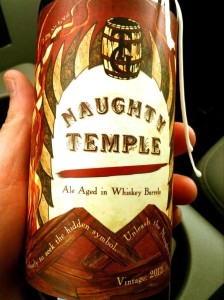 It is thought that India Pale Ales were originally brewed by the British to avoid spoiling on the trip to India. Whether this is a misconception or not, a couple centuries later there are now numerous IPA spin-offs that make up one of the hottest beer varieties. We will take a look at what makes each of these unique from the first batches that traveled by boat.
It is thought that India Pale Ales were originally brewed by the British to avoid spoiling on the trip to India. Whether this is a misconception or not, a couple centuries later there are now numerous IPA spin-offs that make up one of the hottest beer varieties. We will take a look at what makes each of these unique from the first batches that traveled by boat.
English IPA – These brews tend to be mellowed out versions of their American counterpart with lower ABVs (4-6.5%) and less hop presence (40-60 IBU). They are often dominated by English hop varieties, which tend to be more earthy and spicy. Definitely easy drinking.
Notable Examples: Samuel Smith’s India Ale, Great Lakes Commodore Perry IPA
American IPA – It is hard to make generalizations about the Americanized version since there tends to be so much variety. But in general, these brews fall in the 5.5-7% ABV range and carry a bit more bitterness (40-70 IBU). American IPA’s tend to have a higher presence of citrusy hops, but again, lots of variability. There is even further division in this category between East Coast IPAs that tend to have more malt complexity versus West Coast IPAs that tend carry more bitterness.
Notable Examples: Bell’s Two Hearted, Dogfish Head 60 Minute, Ballast Point Sculpin
Double/Imperial IPA – This is the amped up version of an IPA. Again a wide range of measurables on these, but they typically fall in the 8-14% ABV range and can have IBU levels ranging from 60-120, though it is debatable if you can impart more than 100 IBUs in a beer. These beers are typically reserved for more seasoned beer drinkers as the bitterness is not for the faint of heart. The first few Double IPAs you drink will be a painful experience, stick with it and you will forever be changed.
Notable Examples: Russian River Pliny the Elder, Three Floyd’s Dreadnaught, Bell’s Hopslam
Rye IPA – The addition of rye to an IPA gives these beers a light peppery/spiciness at the end that plays really nicely with certain hops, more commonly English varieties. The percentage of rye in the recipe can range from 10% to 40% depending on how noticeable the brewer intends the rye to be.
Notable Examples: Sierra Nevada Ruthless Rye, Great Lakes Rye of the Tiger, Bear Republic Hop Rod
Black IPA – In order to impart the dark color onto this IPA variety, brewers typically use a small amount of dark malts that have an extremely high lovibond level (typically >350°L). Some of the more commonly used malts in this variety are Black Patent, Chocolate, or Carafa III. These malts are typically only used in stouts and porters and they impart a sweetness onto the beer, which doesn’t always pair very well with the bitterness of the hops.
Notable Examples: Stone Sublimely Self-Righteous, Clown Shoes Hoppy Feet, Alaskan Black IPA
Black Rye IPA – Take some of the more redeeming qualities of the above two varieties and combine them into one brew. These brews tend to shade more closely to a Black IPA, but end up much more palatable as the sweetness is balanced out by the spiciness of the rye.
Notable Examples: Firestone Walker Wookey Jack, Boulevard Grainstorm
Belgian IPA – If you take a normal IPA and substitute the standard ale yeast for a Belgian yeast this is what you end up with. Sometimes brewers use candied sugar, which is typical in Belgian varieties, for boosting ABV. These tend to be a little less hoppy and have a drier finish.
Notable Examples: Lagunitas A Little Sumpin’ Wild, Green Flash Le Freak, Ale Asylum Bedlam
Wheat IPA – In this variety, brewers take approximately 50% of the base malt and substitute it with wheat. The end product carries some of the noticeable wheat characteristics in the mouth, but has the nose and bitter finish of an IPA. These tend to be great summer treats.
Notable Examples: Three Floyds Gumballhead, Lagunitas A Little Sumpin’ Sumpin’
Amber IPA – It is true, most of the major sites do not recognize this as a style. My explanation is that as brewers try to push the bounds to please the American palate, some of the best Ambers on the market align more closely with IPAs than their malty counterpart. These brews have a heavier malt backbone that is complimented on either side of the mouth with the nose and bitterness of an IPA.
Notable Examples: Tröegs Nugget Nectar, Oskar Blues G’Knight, Ale Asylum Ambergeddon
Barrel Aged IPA –I saved the newest variety for last. Barrel aging has gotten so popular that brewers figured, why not an IPA? The few of these on the market tend to have a heavier body to carry the barrel flavor, taking these beers up over 8% ABV. There may be some hopiness present, but this beer was built to highlight the barrel aging.
Notable Examples: Toppling Goliath Naughty Temple, Founders Doom